The 20 greatest albums of 1969: From the Rolling Stones to Elvis Presley
The final year of the 1960s was momentous for music and the albums released more than prove it. Graeme Ross gives us the 20 best albums of 1969
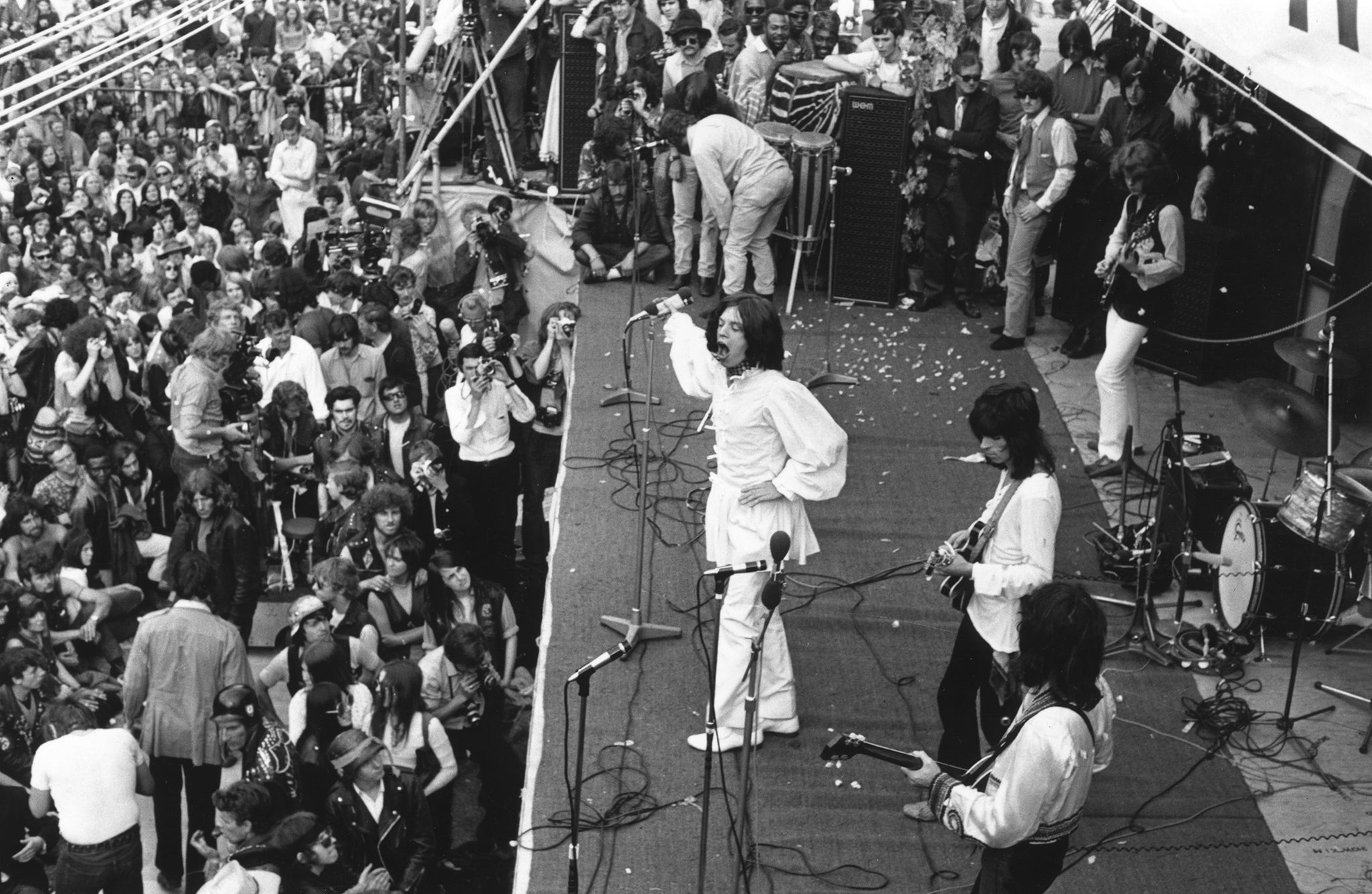
The 1960s was the decade that witnessed the evolution of the long playing record into an art form as artists began to realise the boundless possibilities of the recording studio. The 45 would in no way become passe, however the latter half of the decade belonged to the album as rock music became the cultural touchstone for a generation. The last year of the 1960s boasted an amazingly diverse selection of albums in multiple genres under the grand umbrella of rock as you will see from this list of the 20 greatest albums of 1969.
Two things jump out at me on the list. 1. The number of debut albums, seven in all, showing how quickly artists were grasping the mettle, and 2. The enormously high standard of British music of the time with eight albums on the list, all of them in the top 10.
20. Isaac Hayes – Hot Buttered Soul
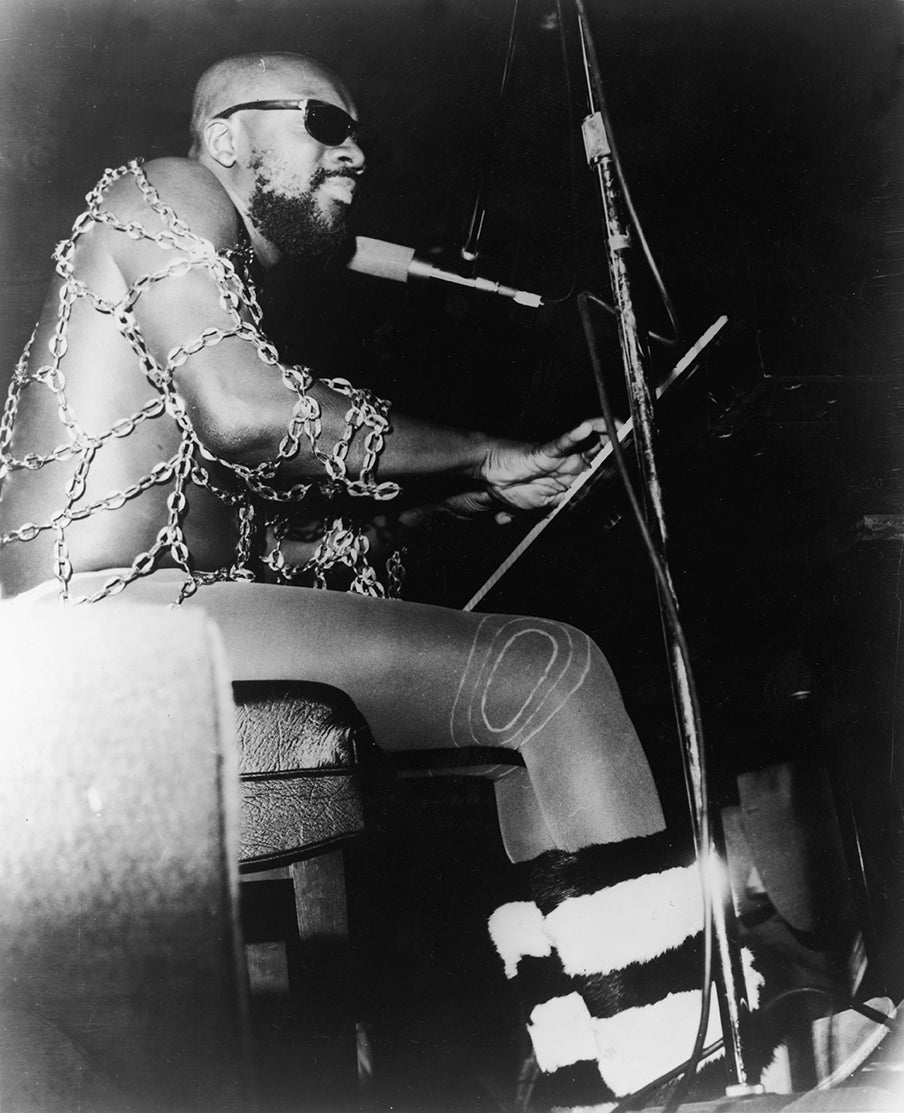
Stax writer and producer Hayes shot to fame with an album that contained just four tracks over 45 minutes of playing time and would influence black music for decades to come. The spoken word raps and sweeping orchestration on such unlikely standards as “Walk on By” and “By the Time I Get to Phoenix” (18 minutes long!) was part of an unprecendented format that transformed these glorious pop standards into another animal altogether.
In the years to come hip-hop artists would appropriate his signature sound and look, and was Barry White listening? You betcha.
19. Bob Dylan – Nashville Skyline
After 1967’s post-motorcycle accident back-to-basics John Wesley Harding, Dylan once more blindsided fans and critic alike as he plunged head first into country music. Perhaps it shouldn’t have been too much of a surprise however, as he had hinted at a new mellow approach with “I’ll Be Your Baby Tonight” on John Wesley Harding. On an album full of homely, deeply personal songs reflecting Dylan’s domestic contentment and his love as a teenager for Hank Williams, “Lay Lady Lay” is the obvious stand out with the rueful “I Threw It All Away” and “Tonight I’ll Be Staying Here With You”, one of his warmest songs not far behind.
18. The MC5 – Kick Out the Jams
An explosive mix of proto-punk and feedback drenched heavy rock powered this politically radical Detroit band’s debut album, which captured perfectly the raw energy of their legendary live act. A naughty word on the incendiary title track caused the band problems however, the fall out from which caused their label Elektra to drop them just as the album was racing up the charts. They moved to Atlantic but the damage had been done and the Motor City 5 never really regained their momentum. Kick Out the Jams eventually got its due however as one of great live albums, with “Motor City Burning” in particular summing up an era of civil disturbance in America’s major inner cities.
17. The Flying Burrito Brothers – The Gilded Palace of Sin
After steering the Byrds towards country music with Sweetheart of the Rodeo, Gram Parsons formed the Flying Burrito Brothers with fellow ex-Byrd Chris Hillman in pursuit of his dream of what he called “Cosmic American Music” – country rock to you and me. The Gilded Palace of Sin was their first effort and failed to sell, but it remains one of the most influential records ever made, establishing a genre and paving the way for the Eagles et al. (Bernie Leadon would soon join the group before helping form the Eagles). The material, mostly original but including two exquisite covers of soul standards “Do Right Woman” and The Dark End of the Street” was impeccable, the musicianship notably from ”Sneaky” Pete Kleinow on pedal steel guitar exemplary. Another highlight “Hot Burrito #1” became better known when Elvis Costello covered it under the title “I’m Your Toy”.
16. King Crimson – In the Court of the Crimson King
“Here’s a band that’s gonna go a long way – King Crimson,” opined Mick Jagger as he introduced the as yet unsigned band at the Stones’ Hyde Park gig in July of ’69. Just months later, the debut album that many critics consider to be the first true progressive rock album was released and hailed as a masterpiece. The immediate selling point was of course the striking album cover, but the bombast and the dark themes of the material such as the title track and “21st Century Schizoid Man” more than matched it. King Crimson would become most identified with guitarist Robert Fripp who is in scintillating form throughout, and a pre-Emerson, Lake & Palmer, Greg Lake contributes some very affecting vocals, especially on the calm amidst the storm “Epitaph”, but In the Court of the Crimson King was very much the vision of lyricist Pete Sinfield and multi-instrumentalist Ian McDonald, who even made the definitive and much maligned prog/rock instrument the Mellotron appealing.
15. Elvis Presley – From Elvis in Memphis
After the triumphant ’68 comeback TV special, a revitalised Elvis recorded his first material in Memphis since his epochal Sun Sessions a decade and a half previously. Backed by crack Memphis sidemen and enjoying a rare period of creative freedom away from the dispiriting movie soundtracks that had constituted the vast majority of his 1960s releases, Elvis came up with one of his most essential albums, taking in gospel, country, soul and rock. The socially aware “In the Ghetto” was the single, just failing to make number one in UK with the album itself topping the long player charts. Elvis rocks up a storm on the opener “Wearin’ That Loved on Look” and his regal take on “True Love Travels on a Gravel Road” comes close to trumping Percy Sledge’s immaculate rendition. “Gentle on My Mind” is a match for the better known Glen Campbell and Dean Martin versions. And just think how great this album would have been if it had included “Kentucky Rain” and “Suspicious Minds” which were both recorded in the same sessions as “In the Ghetto”. For an all too brief period, Elvis was relevant again but Vegas was calling...
14. Crosby, Stills & Nash – Crosby, Stills & Nash
It wouldn’t have been quite accurate to call CSN a super group on their formation in 1968. Yes, they had some great music behind them but Crosby’s rampant ego had resulted in his sacking from The Byrds, Stills had clashed repeatedly with Neil Young, resulting in the implosion of Buffalo Springfield, and Nash had grown weary of England and The Hollies. So the trio weren’t actually doing an awful lot when the stars aligned, reputedly in an impromptu sing-song at Mama Cass’s house, or it could have been Joni Mitchell’s abode. Not surprisingly given their fractious relationships over the years, the individual members can’t agree. But with the release of this, their first album, they did indeed become superstars, if sometimes pretty unbearable ones at that. This is their best work by far, made before Neil Young gave them a harder edge, as well as adding yet one more contrary personality to an already simmering brew. Each member brought their finest, most personal songs of the period – Stills’s “Suite: Judy Blue Eyes” about his break-up with Judy Collins, Crosby’s beautiful “Guinnevere”, Nash’s “Lady of the Island” inspired by his love affair with Joni Mitchell, and with the apocalyptic grandeur of “Wooden Ships” and the ethereal harmonies and blending of voices on the likes of “Helplessly Hoping”, it all made for an irresistible confection. Not that they let it go to their heads of course.
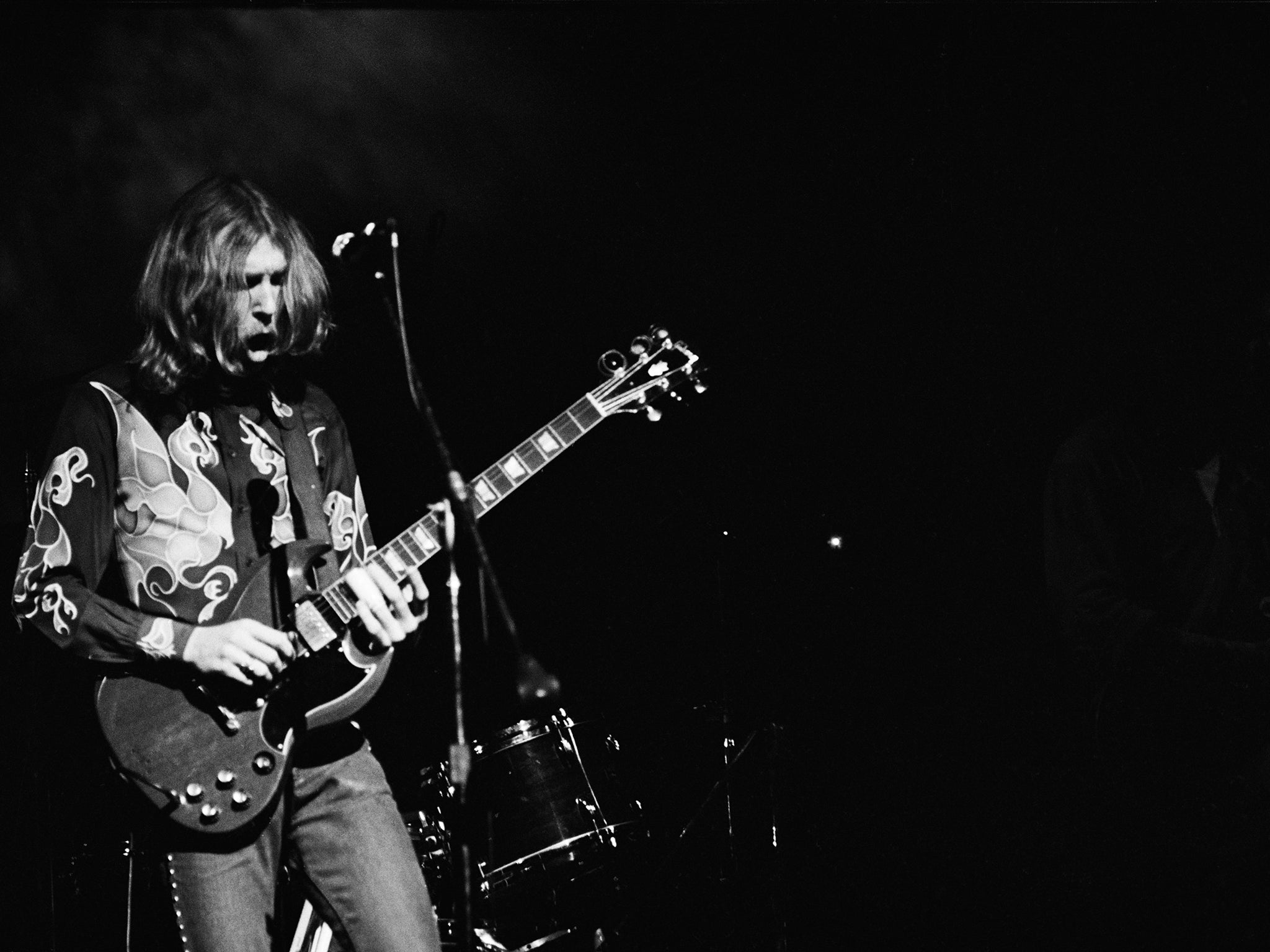
13. The Allman Brothers Band – The Allman Brothers Band
Boasting two drummers, twin guitarists Dickey Betts and slide master Duane Allman, and the raw, soulful vocals of Duane’s younger brother Gregg, just 21, but already sounding like he had lived a hundred lives, the Brothers pioneered a masterly fusion of blues, jazz and soul. It became known as Southern Rock which continues to this day in myriads of bands like The Drive-By Truckers and Blackberry Smoke. Their true forte was as a live act, but their debut album, a mix of traditional blues covers and Gregg Allman originals that sounded so authentic that they could have been written by the old blues masters was an auspicious beginning that grabs the listener from the first few notes of the opener “Don’t Want You No More”. The album climaxes with two of the Allman Brothers most iconic songs – the haunting, melancholic “Dreams” and the doom-laden “Whipping Post”, probably their most loved song, a mere five minutes in its original form, but a song that would take on a life of its own, stretching beyond twenty minutes in concert as the band took it to unheard realms of improvisation.
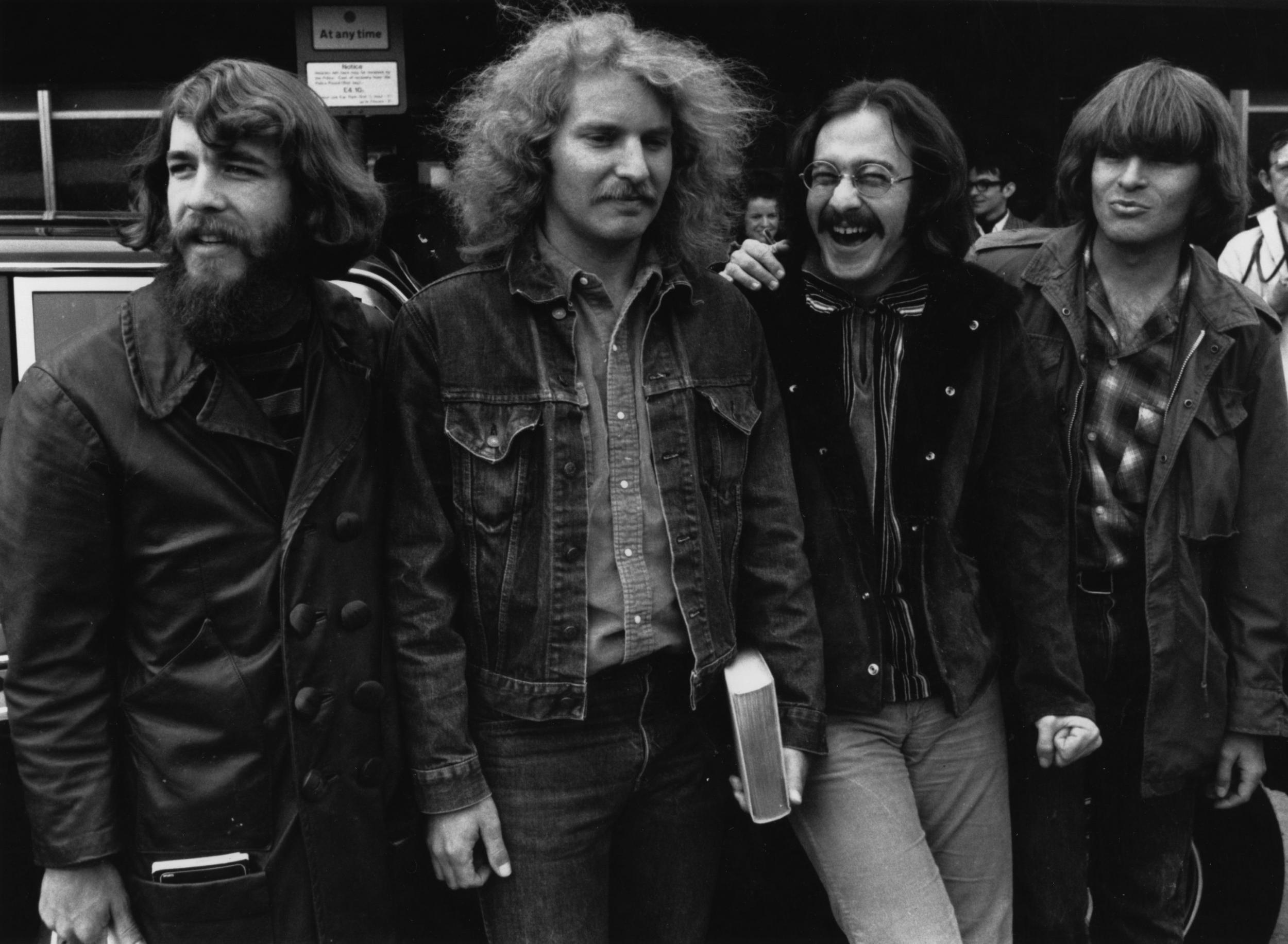
12. Creedence Clearwater Revival – Willy and the Poor Boys
Topping off a hugely successful year that yielded classic singles “Proud Mary” and “Bad Moon Rising”, this was the best of the three albums which this much loved band released in 1969 in one of the most prolific purple patches of the rock era. As lead guitarist, singer, producer and writer of all the songs on these albums bar a few covers, John Fogerty exerted an auteur-like influence on his band. Fogerty hailed from San Francisco and possessed a voice like a New York longshoreman, but his muse was firmly rooted in American roots music, 1950s rock’n’ roll and the mythology of the deep south. Perfect examples of Fogerty’s art abound on this magnificent record and include the feel good “Down on the Corner”, political satire “It Came Out of the Sky”, “Effigy” an attack on Richard Nixon, and Fogerty’s greatest song, one of the most justifiably angry protest songs of all time, “Fortunate Son”, in which he rails against those in power who condemn the lower classes to serve in Vietnam while their own offspring lead a cossetted lifestyle.
11. Captain Beefheart and the Magic Band – Trout Mask Replica
A challenging listen to say the least, it goes without saying that this double album won’t be to everyone’s taste. A primal, atonal mix of delta blues, free jazz, and the avant-garde all sung in the bold Captain’s unique multi-octave voice, now and then a hummable tune briefly breaks out, but is soon squashed by the man also known as Don Van Vliet. The tyrannical Van Vliet tutored his Magic Band for eight months until he was happy with the results and only then recorded the album after reputedly composing all 28 “songs” on the piano despite never having played the instrument before. Old friend Frank Zappa produced, John Peel loved it, helping propel it into the UK album charts, and it rewrote the rule book for just what was possible in rock music.
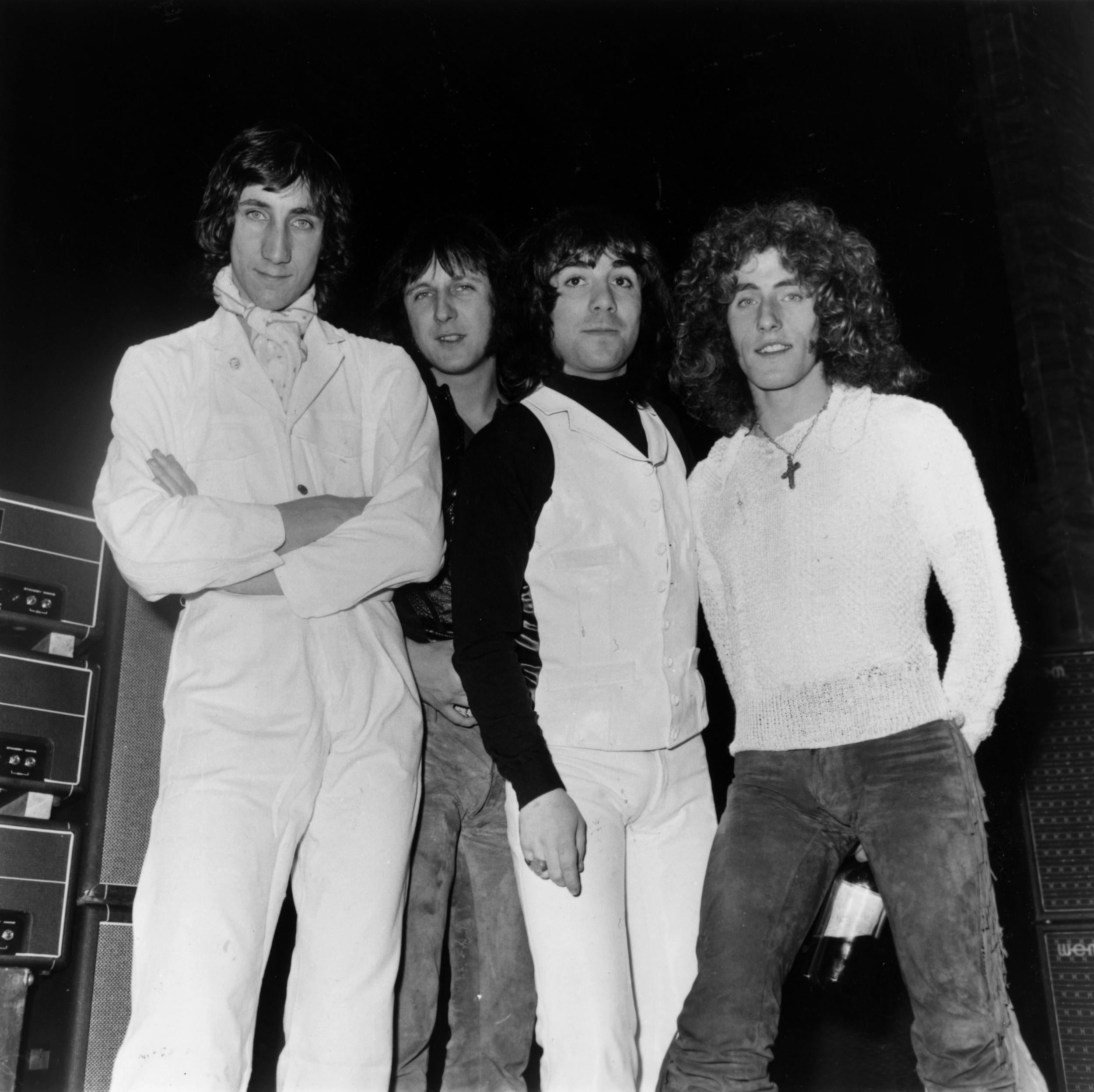
10. The Who – Tommy
The definitive rock opera, but not the first (The Pretty Things SF Sorrow predated it) which has long since transcended its origins, Tommy was an artistic triumph for Pete Townshend. Don’t try and follow too closely the rather silly and confused narrative about the traumatised “deaf, dumb and blind kid” who through the redemptive power of music and pinball becomes an unlikely saviour. Just sit back and be swept along by the lustrous orchestration and superb songs such as “Amazing Journey”, “I’m Free”, and of course, “Pinball Wizard”, and prepare to be moved by the stunning closer “We’re Not Gonna Take It” with its “See Me, Feel Me” refrain. Previously regarded as predominantly a singles band, Tommy arrived in the same year as The Who wowed audiences at the Woodstock and Isle of Wight festivals and they now took their place in the triumvirate of great English bands alongside The Beatles and The Stones.
9. Led Zeppelin – Led Zeppelin 1
The game changing debut that owed so much to the past and influenced so much of what was to come, and ample proof that right from the beginning Zeppelin were always so much more than the lazy stereotype of heavy metal progenitors. I give you the proto-punk of “Communication Breakdown”, the acoustic meanderings of “Babe I’m Gonna Leave You” and “Your Time is Gonna Come” and the blues rock of “You Shook Me” and “I Can’t Quit You Baby”. However the album’s defining track remains “Dazed and Confused”, a perfect example of the band’s amazing alchemy and their immediate future direction.
8. Nick Drake – Five Leaves Left
His music passed virtually unnoticed during his brief lifetime, but the cult of Nick Drake continues to grow. There’s so much to love here – Joe Boyd’s sympathetic production, the lustrous string arrangements, Drake’s resonant delivery, expert finger-picking and introspective lyrics. It all amounts to a beautifully constructed debut album of autumnal chamber folk with light jazzy flourishes which continues to beguile the listener, none more so than “River Man”, one of the most affecting songs you could ever wish to hear.
7. Fairport Convention – Liege and Lief
On their third superb album of 1969, the “English Jefferson Airplane” abandoned their American influences for good and more or less invented English folk/rock as they electrified age-old traditional ballads and jigs such as “Matty Groves”, “Reynardine” and “Tam Lin”. They also found room for some stunningly authentic originals (”Come All Ye”, “Farewell, Farewell”) on an album that provided the template for the future direction of English folk. The musicianship is immaculate and Sandy Denny’s voice a joyous instrument all on its own. A towering achievement.
6. Neil Young with Crazy Horse – Everybody Knows This Is Nowhere
Disappointed with the results of his eponymous debut solo album, Young quickly returned to the studio to record the follow up, an album on which he teamed up for the first time with his most frequent collaborators Crazy Horse, once dubbed “the greatest bar room band in the world”. It was an astonishing quantum leap for Young as he transformed himself from sensitive folkie to guitar hero with blistering workouts “Cinnamon Girl” and ten minute epics “Down By the River” and “Cowgirl in the Sand” demonstrating his ragged yet fluid technique, and all of which had been written by Young as he lay in bed with a 103 degree temperature. The title track is a joy too, harking back to his Buffalo Springfield days. Rock’s great maverick would soon blindside fans and critics alike by joining Crosby, Stills & Nash and aligning himself with the singer-songwriter movement on his next two classic albums After the Goldrush and Harvest, but this was his breakthrough, thanks in no small part to Crazy Horse, who, through the ensuing decades would prove to be Young’s constant anchor.
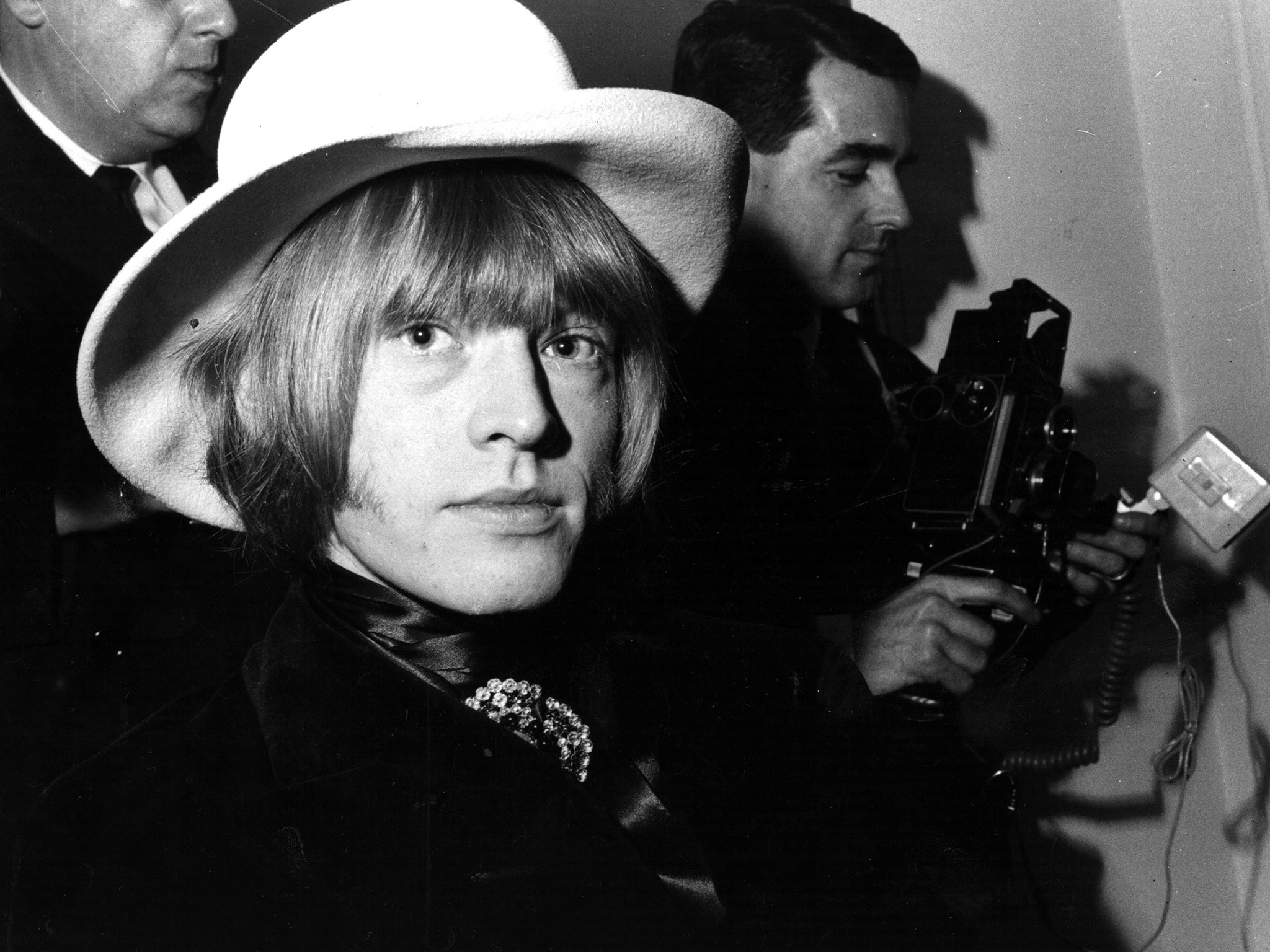
5. The Rolling Stones – Let It Bleed
The second of the run of four indispensable albums from the Stones classic second period is the last to feature the presence of Brian Jones and the first with his replacement Mick Taylor on board. It’s book ended by two of their greatest songs, the menacing, foreboding “Gimme Shelter” and the epic “You Can’t Always Get What You Want”. In between, “Midnight Rambler” and “Love in Vain” both echo the rootsy direction of Beggars Banquet, “Monkey Man” features one of Jagger’s finest vocals and the title track finds the Stones at their most defiantly deviant. Released in the last month of Sixties and the day before the tragic events at Altamont, Let it Bleed, the Stones darkest album appropriately brought the curtain down on a tumultuous decade for music and society.
4. Led Zeppelin – Led Zeppelin II
A quick follow up which was recorded on the road as between interminable gigs, Zeppelin’s second album of 1969 managed to trump their sensational debut, and proved to be the launch pad that made them the biggest band of the 1970s as they developed the blues/rock sound of their debut into their rifftastic blueprint for heavy metal. “Ramble On”, “Whole Lotta Love”, “Lemon Song”, “Moby Dick”, “Heartbreaker” – songs that define Zep’s blistering sound – they’re all here on this phenomenal record. 1969 ended with Led Zeppelin II ousting The Beatles’ Abbey Road from the number one spot in the album charts. A new order and a different kind of music ruled.
3. Dusty Springfield – Dusty in Memphis
Dusty had always been a lover of Motown and Stax and she jumped at the chance to sign for Atlantic and travel to American Sound Studios in Memphis where she worked with a team of crack producers and musicians on a record now firmly regarded as the greatest white soul album ever. It almost never happened, as the notoriously insecure singer felt intimidated by her surroundings and the litany of great artists who had recorded there. Ultimately, the vocals on Dusty in Memphis were recorded in New York, but it didn’t really matter as the result was perfect. A collection of marvellous songs by some of the top songwriting teams of the day including Goffin and King, Bacharach and David, and Barry Mann and Cynthia Weil as well as the emerging Randy Newman, who brought out the natural soulfulness of Dusty’s voice. The sultry tone is set on the opening track “Just a Little Lovin”, continues through the monumental “Son of a Preacher Man” and reaches its peak on “Breakfast in Bed”, on which Dusty makes it clear that something other than food is on the menu. But she saves the best for last – on the masterpiece that is “I Can’t Make it Alone” when she sings “there’s something in my soul / that will always lead me back to you” followed by “Oh, help me/you know I need you” at around the 3.18 mark, the effect is ethereal.
2. The Beatles – Abbey Road
With Let it Be already in the can but not yet deemed fit for release due to the fractious nature of the recordings, Abbey Road was chronologically, the last Beatles album to be recorded. Fittingly, although many of the tracks were the products of the individual members, Abbey Road reunited the band for one last magnificent hurrah. Abbey Road is justly celebrated for the 16 minute medley on side two commencing with McCartney’s “You Never Give Me Your Money” and concluding with appropriately enough, “The End”, but it’s also a side that begins with Harrison’s superb “Here Comes the Sun”. Harrison also contributed “Something” one of the great love songs and Lennon is at his acerbic best on side one’s opener “Come Together”. The seven minutes plus “I Want You” is the Beatles at their heaviest and most together. But for people of a certain vintage nothing before or since has topped that glorious side two suite of half-finished songs which became known as “The Long One”.
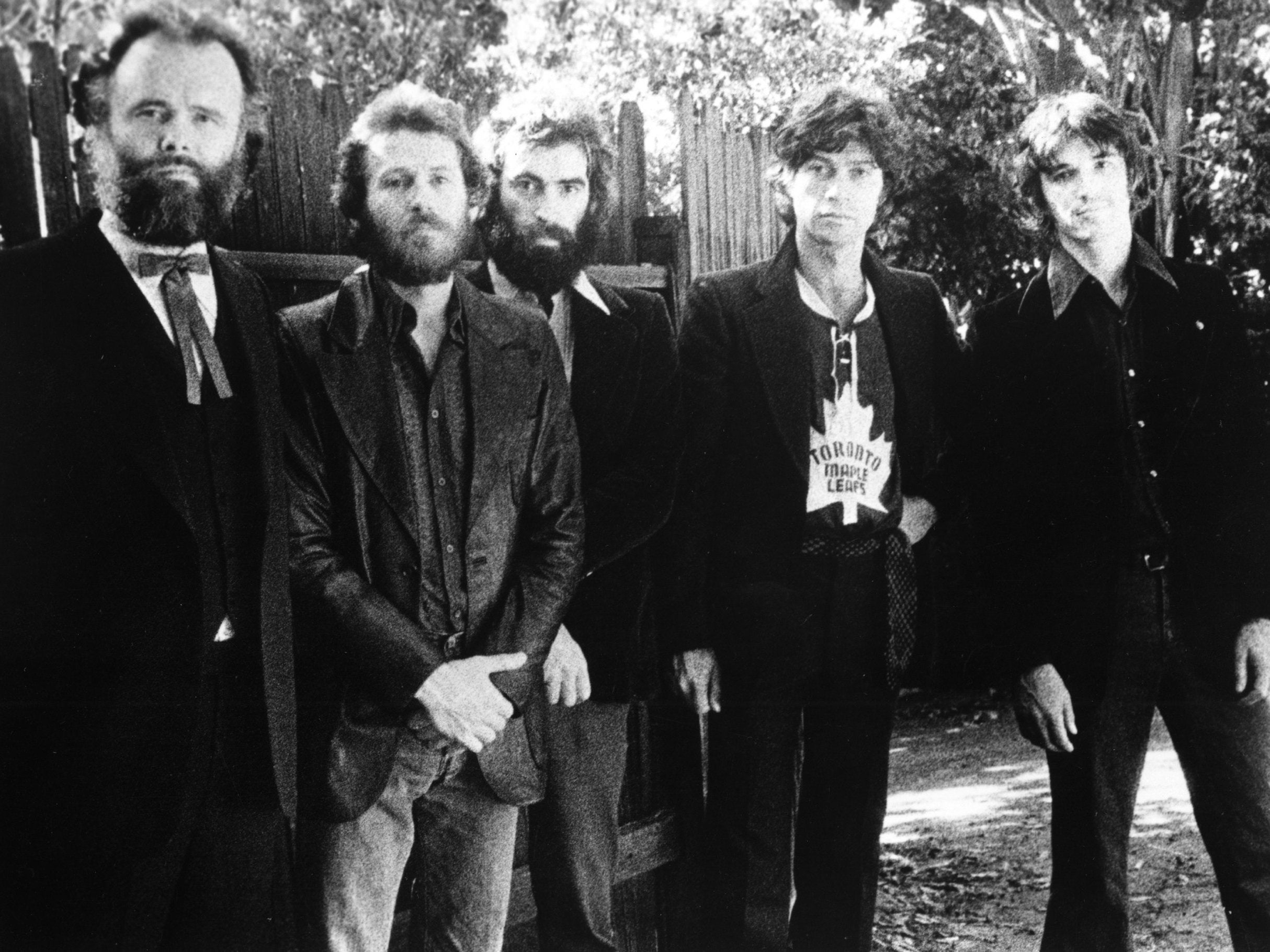
1. The Band – The Band
The Band’s debut album, 1968’s Music From Big Pink was deemed an instant classic and they expanded and improved their unique take on America’s sepia-tinged folklore with this epochal album. The deep south proved fertile ground for natural storyteller Robbie Robertson as he applied his gift for lyrical imagery on the heartbreaking “Unfaithful Servant”, the down home country funk of “Up On Cripple Creek”, and the Civil War lament “The Night They Drove Old Dixie Down”, and brought memorable characters to life – Virgil Caine on the latter, and the farmer in “King Harvest (Has Surely Come)” who puts his faith in his trade union when his crops fail. It’s an album full of moments – Robertson’s wonderfully economical guitar solo on “King Harvest”, Rick Danko’s rustic fiddle intro to the swinging “Rag Mama Rag”, Richard Manual’s cracked vocal on “Whispering Pines”. They may have looked and sounded out of step with the prevailing musical trends of the times, but in looking back to America’s past, The Band produced a landmark album of timeless quality. Not just the best of its time, but one of the best of all time.
Join our commenting forum
Join thought-provoking conversations, follow other Independent readers and see their replies
Comments